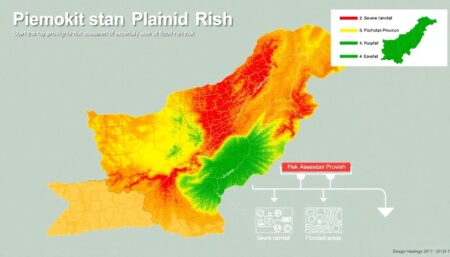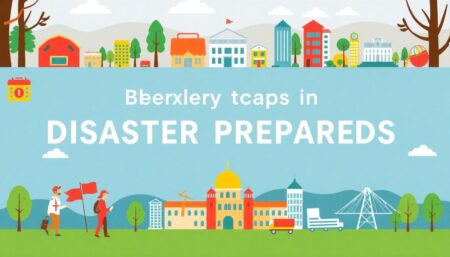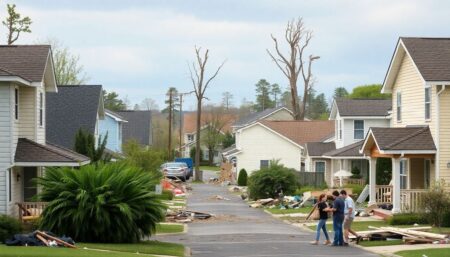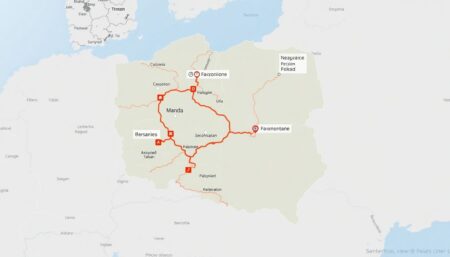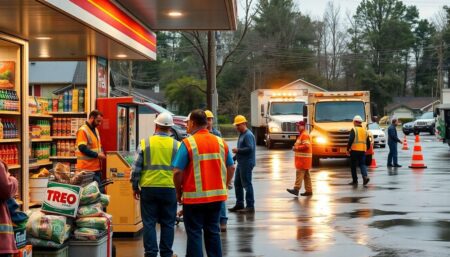Welcome to this fascinating exploration of earthquakes and their impact on our world. In this article, we’ll delve into the dynamics of the lithosphere, assess seismic hazards, and discuss how forecasting and risk communication can mitigate disasters. Join us on this journey to understand why earthquakes happen and how we can prevent them from turning into catastrophes.
Understanding Seismic Hazards and Preventing Disasters
Earthquakes, the planet’s most dramatic manifestation of its restless geology, are not just surface-level shudders; they are deeply intertwined with the dynamics of the lithosphere, Earth’s rigid outer shell. Comprising the crust and upper mantle, the lithosphere is fragmented into tectonic plates that drift, collide, and dive beneath one another in a dance that constantly reshapes our world, causing earthquakes along plate boundaries or faults. This perpetual motion, driven by the slow churning of the underlying mantle, makes our planet dynamic and uniquely habitable, but it also presents significant challenges and hazards.
The impact of an earthquake is not solely determined by its magnitude; multiple factors coalesce to create what scientists refer to as ‘seismic hazard.’ Seismic hazard assessments evaluate the likelihood of specific earthquake effects on a given region, factoring in historical seismicity, fault data, and soil conditions. These assessments help inform building codes, urban planning, and emergency preparedness. However, earthquakes don’t just pose a threat through ground shaking. They can trigger secondary hazards like tsunamis, landslides, liquefaction, and even volcanic eruptions, compounding their destructive potential and complicating risk management efforts.
Given the inevitability of earthquakes, communities worldwide are striving to enhance their resilience, a measure of their ability to prepare for, absorb, and recover from these events. Vulnerability and resilience assessments identify weaknesses and strengths within physical infrastructure, social systems, and economic networks, fostering targeted improvements. Effective risk communication is paramount in this process, ensuring that stakeholders—from policymakers to the public—understand and act upon the risks they face. Meanwhile, earthquake forecasting, though still largely probabilistic, continues to advance with improved seismic monitoring, modeling, and artificial intelligence, offering hope for more precise early warnings in the future.

The Dynamics of the Lithosphere
The lithosphere, Earth’s outermost shell, is not a single, solid piece but a dynamic, ever-shifting puzzle of tectonic plates. This dynamic nature is a result of the slow and steady motion of these plates, which float on the weaker, ductile asthenosphere below. The lithosphere is composed of both the crust (the outer layer where we live) and the upper mantle, and it’s the interaction of these plates that contributes significantly to the occurrence of large earthquakes.
Tectonic stresses, the forces that drive the motion of these plates, play a pivotal role in the buildup to an earthquake. These stresses can be
- compressional, where plates push against each other,
- tensional, where plates pull apart,
- shear, where plates slide past each other.
or
When these stresses reach a critical level, they can cause the plates to suddenly slip, releasing a massive amount of energy in the form of an earthquake.
This process is part of what’s known as the seismic cycle, which includes the slow buildup of stress, the sudden release in the form of an earthquake, and then the period of relative quiet while stress builds up again. The seismic cycle can be divided into three main stages:
- The interseismic period, where the plates are locked and stress is building.
- The coseismic period, which is the actual earthquake event where the plates slip and release energy.
- The postseismic period, where there may be aftershocks and a readjustment of the crust.
Large earthquakes, often occurring at the boundaries of these plates, can have monumental impacts on the landscape and society. These events, a result of the complex dynamics of the lithosphere and the relentless forces of tectonic stress, are a testament to the ever-changing nature of our planet. Understanding this process is crucial for earthquake hazard assessment, risk reduction, and preparedness efforts.

Seismic Hazard Assessments and Cascading Hazards
Seismic hazard assessments are crucial for understanding and mitigating the risks associated with earthquakes. These assessments employ various methodologies to evaluate the potential impacts of seismic events. One of the primary methodologies is Probabilistic Seismic Hazard Analysis (PSHA), which considers the likelihood of different earthquake scenarios and their expected ground motions. This approach integrates data from historical earthquakes, geological fault information, and ground motion prediction equations. Another key methodology is Deterministic Seismic Hazard Analysis (DSHA), which focuses on specific earthquake scenarios, often based on the worst-case events that could occur in a particular region.
In addition to PSHA and DSHA, advanced techniques such as fault-based assessments and site-specific response analyses are used to refine our understanding of seismic hazards. Fault-based assessments involve detailed studies of individual faults, including their slip rates, recurrence intervals, and maximum expected magnitudes. Site-specific response analyses, on the other hand, evaluate how local geological conditions, such as soil types and topography, can amplify or attenuate ground motions during an earthquake.
Large earthquakes often trigger cascading hazards, exponentially increasing the risk to communities and infrastructure. One of the most devastating cascading hazards is tsunamis. These are typically generated by underwater earthquakes that cause significant vertical displacement of the seafloor, leading to massive waves that can travel long distances and inundate coastal areas. The impact of tsunamis can be exacerbated by factors such as coastal topography, bathymetry, and the resonance of harbor basins.
In addition to tsunamis, large earthquakes can trigger widespread landslides, particularly in mountainous regions. These landslides can occur due to the intense shaking and ground failure caused by the earthquake. The cascading hazards associated with landslides include:
- Debris flows that can bury communities and infrastructure.
- Dam failure, leading to catastrophic flooding.
- Blockages of rivers and streams, creating temporary dams that can subsequently fail and cause downstream flooding.
Effective seismic hazard assessments must consider these secondary hazards to provide a comprehensive understanding of the total risk posed by large earthquakes.
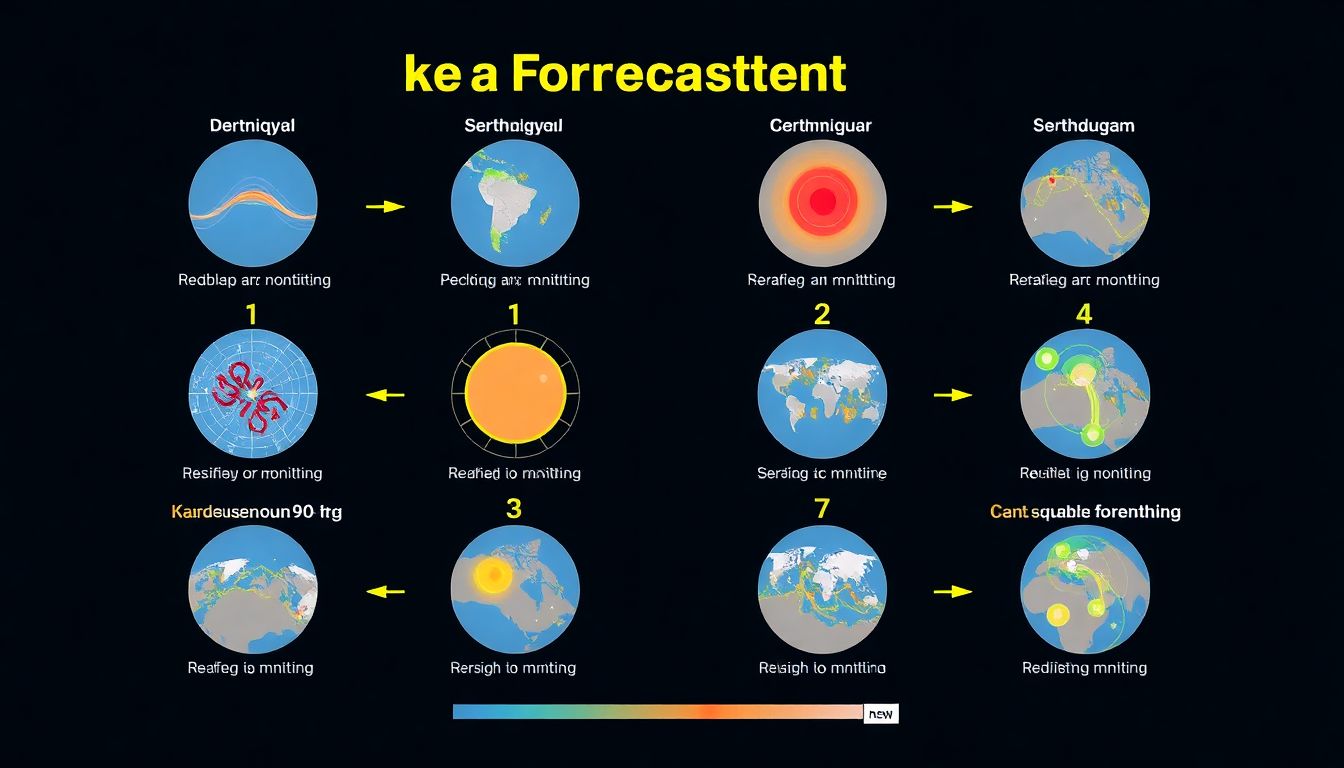
Forecasting Large Earthquakes
Earthquake forecasting, a critical aspect of seismology, has seen significant advancements in recent years, yet it remains a field filled with challenges and unknowns. Currently, scientists can make long-term forecasts, estimating the likelihood of an earthquake in a specific region over decades. This is primarily based on the area’s historic seismicity and known fault lines. Intermediate-term forecasts, which focus on months to years, are also possible but with higher uncertainty. Short-term predictions, which could provide days to weeks of warning, are the holy grail of earthquake forecasting but are currently beyond our reach.
Several basic methods are used in predicting earthquakes:
-
Probabilistic Seismic Hazard Analysis (PSHA):
This method combines historical seismicity data, fault information, and ground motion prediction models to estimate the likelihood of future earthquakes.
-
Pattern Recognition:
This approach involves identifying and monitoring precursory patterns, such as foreshocks, changes in groundwater levels, or unusual animal behavior.
-
Geodesy:
Using GPS and other technologies, scientists measure the slow deformation of the Earth’s surface caused by tectonic forces. These measurements can help identify areas where strain is building up.
-
Seismicity Studies:
Monitoring the frequency and magnitude of earthquakes in a region can help understand its seismic cycle and anticipate future events.
Despite these methods, earthquake forecasting faces numerous challenges. Earthquakes are part of complex, chaotic systems where a tiny change can lead to significantly different outcomes. This inherent unpredictability makes precise forecasts difficult. Additionally, our understanding of the physical processes governing earthquakes is still incomplete. We know that strain builds up in the Earth’s crust and is released through earthquakes, but the exact mechanics of how, when, and why this happens remain elusive.
Moreover, there are several unknowns in this field. We do not know if all earthquakes have foreshocks or if they are even a reliable precursor. The role of deep, slow earthquakes in triggering large, shallow ones is also not fully understood. Furthermore, the interaction between different faults and the impact of human activities, such as hydraulic fracturing and reservoir impoundment, on seismicity are active areas of research. Addressing these challenges and unknowns will require continued interdisciplinary efforts and innovative approaches.

Vulnerability, Resilience, and Risk Communication
Earthquake risk management is a multifaceted process that hinges on understanding and mitigating the potential impacts of seismic events. One of the critical components of this process is the assessment of vulnerability and resilience. Vulnerability assessments involve identifying the elements at risk, such as buildings, infrastructure, and populations, and evaluating their susceptibility to earthquake damage. This step is crucial as it helps pinpoint weak spots and prioritize areas that need reinforcement or intervention.
Resilience assessments, on the other hand, focus on the ability of communities and systems to absorb, adapt to, and rapidly recover from the impacts of an earthquake. By gauging resilience, risk managers can develop strategies that enhance the capacity of communities to bounce back from disasters. These assessments consider factors like the robustness of infrastructure, the effectiveness of emergency response plans, and the social cohesion within communities. Together, vulnerability and resilience assessments provide a comprehensive view of earthquake risk, enabling more targeted and effective risk management strategies.
Effective risk communication is equally vital in preparing communities for potential earthquake disasters. Communication strategies should be clear, timely, and tailored to the needs and understanding of the audience. Here are some key strategies for effective risk communication:
-
Transparency:
Be open about the risks and uncertainties involved. This builds trust and encourages community engagement.
-
Simplicity:
Use plain language and avoid technical jargon to ensure the message is easily understood.
-
Consistency:
Ensure that all communication channels convey the same information to avoid confusion.
-
Inclusivity:
Tailor messages to different segments of the population, considering factors like language, culture, and accessibility needs.
Moreover, leveraging technology and community partnerships can amplify the reach and impact of risk communication. Social media platforms, mobile apps, and early warning systems can disseminate information rapidly and widely. Collaborating with local leaders, non-governmental organizations, and community groups can also help ensure that risk communication reaches even the most marginalized populations. By fostering a culture of preparedness through continuous education and engagement, communities can be better equipped to face and recover from earthquake disasters.
FAQ
What are the main causes of earthquakes?
How are seismic hazards assessed?
What are cascading hazards?
Can earthquakes be predicted?
How can communities prepare for earthquakes?
- Conduct vulnerability and resilience assessments to identify at-risk areas and structures.
- Implement building codes and retrofitting measures to strengthen infrastructure.
- Develop and practice emergency response plans.
- Engage in effective risk communication to educate the public about earthquake preparedness.





